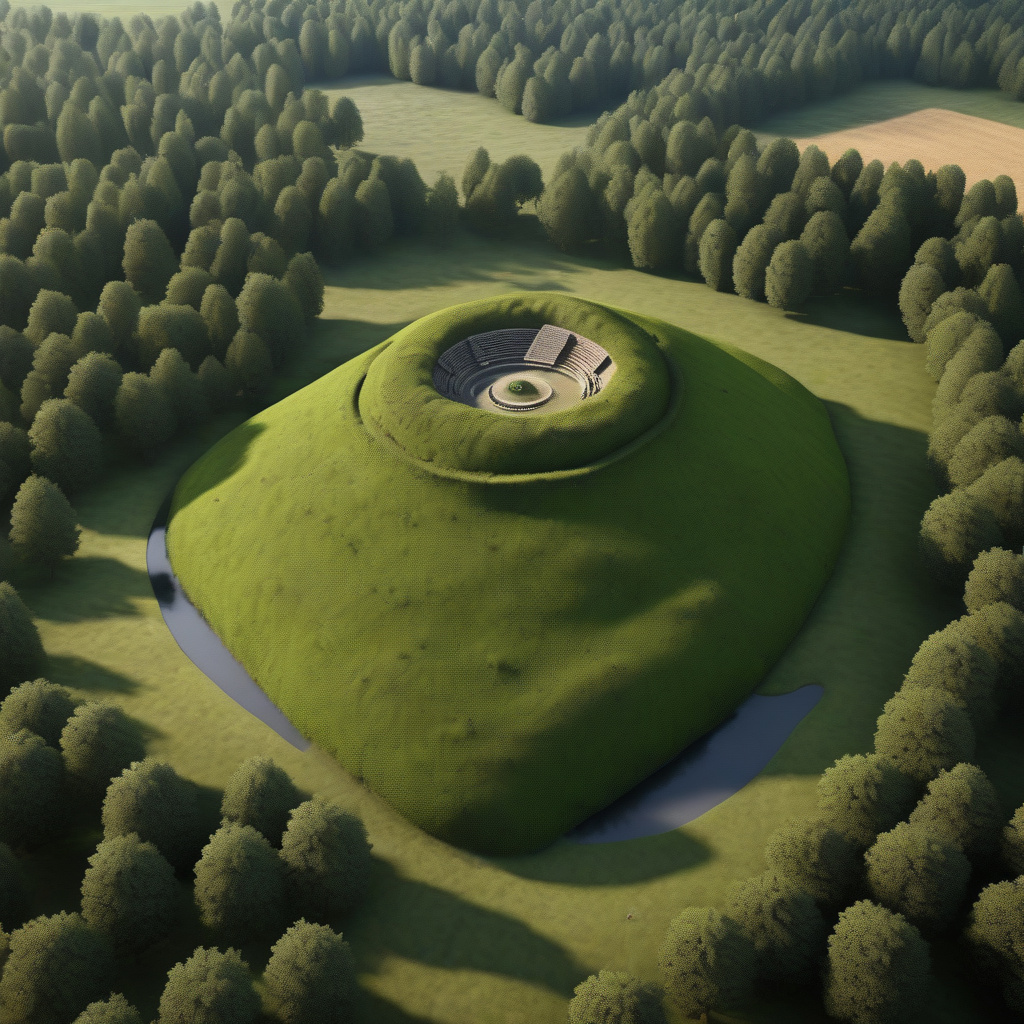2,000-Year-Old Roman Tumulus Uncovered in Bavaria Leaves Archaeologists Awestruck
Archaeologists uncovered an extremely rare and massive Roman circular monument in Upper Bavaria, shedding new light on the ancient Roman presence in the region. The tumulus, estimated to be around 2,000 years old, has stunned experts with its remarkable preservation and intricate design.
The discovery of this Roman tumulus is a significant find that offers valuable insights into the history and culture of the Roman Empire. The monument, which measures approximately 30 meters in diameter, is believed to have served as a burial site for high-ranking Roman officials or nobility. Its impressive size and elaborate construction reflect the wealth and power of the individuals interred within.
What sets this Roman tumulus apart from others is its exceptional state of preservation. The structure’s circular shape and the materials used in its construction have stood the test of time, providing archaeologists with a rare glimpse into the architectural prowess of the ancient Romans. The meticulous craftsmanship and attention to detail displayed in the monument’s design highlight the sophistication of Roman engineering and construction techniques.
Furthermore, the discovery of the tumulus challenges existing perceptions of Roman presence in Bavaria. While the region was not typically associated with significant Roman settlements, the unearthing of this monumental structure suggests a deeper and more enduring Roman influence than previously thought. The tumulus serves as a tangible reminder of the reach of the Roman Empire and its impact on the territories it governed.
In addition to its historical significance, the Roman tumulus has generated excitement among archaeologists and historians for the wealth of information it promises to yield. The site is expected to provide valuable insights into Roman funerary practices, religious beliefs, and social hierarchies. By studying the artifacts and remains found within the tumulus, researchers hope to piece together a clearer picture of life in Roman Bavaria and the connections between local populations and the Roman occupiers.
The discovery of the 2,000-year-old Roman tumulus in Bavaria underscores the importance of archaeological research in uncovering the mysteries of the past. Each new find has the potential to reshape our understanding of ancient civilizations and shed light on aspects of history that have long been forgotten or overlooked. As technology and techniques continue to advance, archaeologists are better equipped than ever to explore the depths of our shared heritage and bring to light stories that have remained buried for centuries.
In conclusion, the unveiling of the Roman tumulus in Bavaria stands as a testament to the enduring legacy of the Roman Empire and the ingenuity of its builders. This remarkable discovery serves as a reminder of the rich history that lies beneath our feet and the importance of preserving and studying the remnants of the past for future generations to appreciate and learn from.
Roman Empire, Bavaria, Archaeology, Tumulus, Preservation












